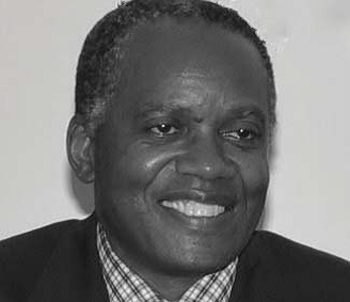Improving healthcare and social services for those with sickle cell disease
— Cameroon, Congo-Brazzaville, Madagascar, DRC —

BACKGROUND
In central Africa and Madagascar, the prevalence of the sickle cell gene ranges from 10% to 30%. Up to 2% of infants are born with the most severe form of the disease, and, without early and appropriate treatment, half to three quarters of these die before reaching the age of five. National programmes are generally attempting to curb this phenomenon, but governments lack the needed resources. In 2014, to remedy this problem, the IECD, the AFD and Fondation Pierre Fabre decided to invest in a major project spread over four years. The objectives: reduce the mortality and morbidity related to sickle cell disease and improve patient quality of life.
This programme, implemented in 2014 in the Democratic Republic of Congo and Madagascar and in 2015 in Congo-Brazzaville and Cameroon, focuses first and foremost on improving screening of children. By training healthcare workers and establishing functional laboratories in referring healthcare centres, it will be possible to screen nearly 100,000 children. The programme will also improve medical care by training healthcare professionals and the parents of affected children, as well as purchasing vaccines and medicines. Communication and information dissemination will also be addressed: 160,000 women, students, teachers, and others will be educated on the importance of screening, as will associations working with street children.
In addition to financial support, the Pierre Fabre Foundation will help the project with its expertise in sickle cell disease and share wisdom gained from its experiences in Madagascar and in Kinshasa.
Ultimately, this programme is expected to produce lasting change in the population’s behaviour and empower local health structures. It should also encourage public authorities to make sickle cell disease a priority. This could be done, for example by including it in the basic healthcare package, or adding it to initial training curricula for healthcare professionals or to training for primary- and secondary-school teachers.
KEY FACTS
_____
Priority
Combating Sickle cell disease
Programme
Since 2014
Type of involvement
Distributor and operator
Actions
- Programme cofounding
- Steering collaboration
- Strengthening the early detection circuit
- Access to quality care for sickle cell patients and their families
- Training of health personnel in diagnosis and management
- Improving public awareness of the disease
- Structuring advocacy actions
Centre hospitalier Monkole
4804, Avenue Ngafani,
Quartier Masanga-Mbila,
Commune de Mont-Ngafula
KINSHASA
DRC
www.monkole.cd/

At regional level, we intend to strengthen the Sickle Cell Disease Research Network in Central Africa (REDAC). Created in Kinshasa five years ago, it serves as a platform for dialogue and information-sharing, bringing together scientists and practitioners from several central African countries. This ambitious project will boost the REDAC’s influence among authorities and funding partners.”
Pr Léon Tshilolo
Medical Director/Senior Coordinator – Monkole Hospital Centre – Health Training and Support Centre (CEFA), Kinshasa
ACHIEVEMENTS AND FUTURE INITIATIVES
Achievements

48
healthcare centres partnering on the project (40 in the DRC and 8 in Madagascar)

2 500
professionals trained in the management of sickle cell disease since 2018

69,202
screenings in 2019 in the 80 partner health centres

80,000+
persons reached by information campains

3,790
sickle cell patients to be treated in 2019 in partner health centres
Initiatives
Côte d’Ivoire will be included in the second phase of the programme, which will continue until 2020 along the same lines, with increased support and training.
PARTNERS
- Agence française de développement – AFD (funding)
- Institut européen de développement et de coopération – IECD (project leader)
- Hôpital d’Essos de Yaoundé (CNPS) – Cameroon
- Institut Malgache des Recherches Appliquées (IMRA) – Madagascar
- Health centres supported by IECD in Pointe Noire– Congo-Brazzaville
- Hôpital Monkole de Kinshasa – Democratic Republic of Congo
See also
Creating and developing the Research Centre to combat sickle cell disease
With leadership from Professor Dapa Diallo and strong support from the Foundation, the first Research Centre to combat Sickle Cell Disease opened in Bamako, Mali, in 2005.
30/07/2018See also
Screening and management of sickle cell disease
The long-term objective is to sensitise governments to the benefits of a national programme combatting sickle cell disease, and having a viable and adaptable disease management model.
30/07/2018Follow our actions
Twenty-five years ago, the Fondation Pierre Fabre was recognized as a public-interest foundation
This was an essential step for Pierre Fabre, who was personally involved in obtaining that status. This recognition provided the assurance of reliability and steadfast presence, and also authorized the receipt of grants, donations and bequests by virtue of its public-interest mission.





